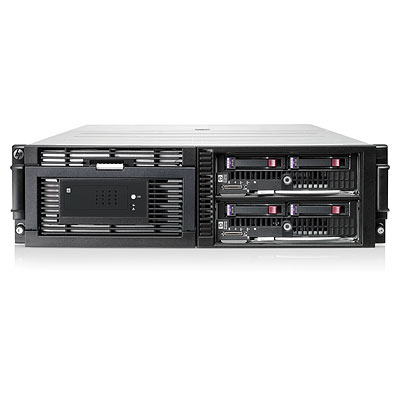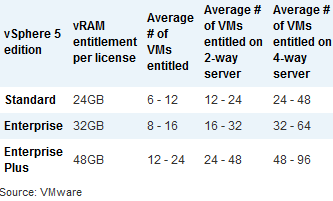Just seen this on my Linked in feed, its pretty good for visualizing word clouds and giving importance to those words that occur more frequently, try it out, even just for fun! 🙂
Aug 08
Hybrid Exchange?
Fancy moving to the ‘cloud’ for exchange hosting? Liking the idea of Office 365 but still want onsite exchange? Then look no further! Hybrid deployment and migration of exchange
is available in an Office 365 environment.
The hybrid version allows you to run an Exchange 2010 service onsite (either as the main exchange environment, or through a minimal Exchange 2010 service installed in your current 2003/2007 environment). It allows for:
- Mail routing with a shared domain (@company.name)
- Shared address book across on-premises and cloud
- Calendar sharing
- Centralized control of mail flow
- Outlook Web Access through the same URL
- Migration of onsite mailboxes to the cloud
- Centralized mailbox management
- Single sign on (identity federation) which utilizes AD FS
This is a definite plus to those wanting to move to Office 365 as the migration of mailboxes is handled by Exchange and the hybrid ‘connector’ and you can run some in the cloud whilst testing just to make sure its what you want to do.
![]() See here for more details
See here for more details
Aug 05
Exchange in a box
 The HP E5000 Messaging System for Microsoft Exchange Server 2010, is a jointly engineered converged infrastructure preferred solution for Microsoft Exchange Server 2010. It is the industry’s first self-contained platform which integrates servers, storage, networking, software, configuration tools, and support – everything you need to run Exchange Server 2010. The HP E5000 is pre-configured and optimized to run Exchange 2010 using best practice architecture from both HP and Microsoft.
The HP E5000 Messaging System for Microsoft Exchange Server 2010, is a jointly engineered converged infrastructure preferred solution for Microsoft Exchange Server 2010. It is the industry’s first self-contained platform which integrates servers, storage, networking, software, configuration tools, and support – everything you need to run Exchange Server 2010. The HP E5000 is pre-configured and optimized to run Exchange 2010 using best practice architecture from both HP and Microsoft.
The HP E5000 offers customers several benefits:
- A complete solution for Exchange 2010, offering a rapid planning and deployment cycle – made possible by the pre-configuration work done by HP and Microsoft, and the configuration software developed specifically for this solution.
- Large, low-cost mailboxes pre-configured as part of the solution.
- A high availability configuration, both from the server role perspective as well as mailbox resiliency (using a two-copy Database Availability Group).
- Decreased operational running costs resulting from savings in both datacenter space and power consumption.
- Flexibility to grow – both by adding mailboxes and increasing mailbox sizes.
- 24×7 support of both HP hardware and Microsoft software provided by HP with 4 hour on-site response included for 3 years.
- A solution designed and backed by HP and Microsoft.
The HP E5000 is ideally suited for customers with a mailbox count ranging from 250 up to 15,000. It is an on-premises solution which will excel in several scenarios:
- A typical single-site deployment offering high availability in a complete solution.
- A distributed IT environment, offering geographical redundancy in a high availability or disaster recovery mode.
- Remote or branch office deployments.
I think this is going to be a fairly compelling solution, not just because of the hardware it’s based on, but also due to how easy it is to deploy in your environment. It’s an enterprise ready Exchange solution that can be deployed without any complex calculations, no hotfixes to add, no need to understand the storage testing tools, no need to configure the availability database groups – it’s all done for you, just in-a-box. Yes you can deploy it yourself, but you will still need to do a fair bit of work with the planning, implementation and migration of the current environment onto this box, but that is what Professional Services is for isnt it? 🙂
Aug 04
VMware License changes to change
There has been a lot of backlash against VMware for changing their licensing model with the introduction of vSphere 5, basically to license different versions of the vSphere family against the amount of virtual memory capacity, which meant customers with larger vm’s with lots of memory would take quite a hit when it came to license renewal & upgrade time.
Thankfully VMware have backed down a little and increased the memory limits set on each version of vSphere. But is it too little too late? Has VMware annoyed its user base too much now, are people thinking of jumping ship to Hyper-V? Only time will tell.
 So how does vRAM memory pricing/capping/licensing work?
So how does vRAM memory pricing/capping/licensing work?
Each license for vSphere has a set level for the memory cap dependant on the edition of vSphere being purchased. If you exceed that cap on the hypervisor host you have to buy a 2nd, 3rd, 4th, 5th
etc license to cover the virtual memory that the hypervisor ‘gives’ to guest VM’s.
VMware have announced that Essentials, Essentials Plus & Standard edition of vSphere 4 have their caps now increased from 24GB to 32GB. This in theory equates to a 33 per cent price drop. Enterprise & Enterprise plus has a cap of 96GB now, which should amount to a 50 percent saving.
vSphere pricing is now being based on average vRAM usage over a longer period (12 months) not just looking at the big peak needs. This will average the vRAM usage across
individual machines and also in pools of machines over this 12 month period.
ESXi 5 has also had its cap moved, from 8GB to 32GB.
For more information on this check out check out Bogomil Balkansky’s blog VP, Product Management at VMware
Jul 09
3par hardware to be replaced
HP may be thinking of replacing the hardware that comes with its 3par storage offering. The software is the best component of the storage array, baring its brilliant ASIC, but HP are trying to sort out the imbalance between the software and the hardware.
http://www.theregister.co.uk/2011/07/08/hp_replacing_3par_hw/



